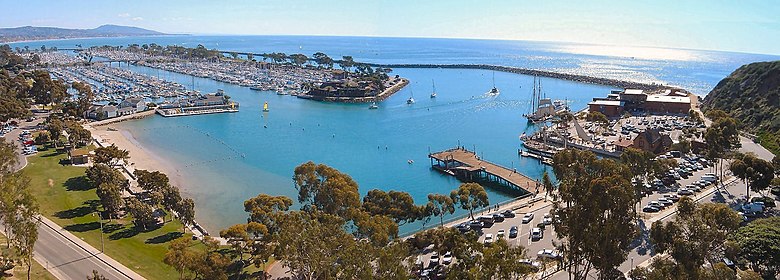Dana Point is a city located in southern Orange County, California, United States. Take a look below for 20 fascinating and amazing facts about Dana Point, California, United States.
1. The population was 33,107 at the 2020 census.
2. It has one of the few harbors along the Orange County coast, and with ready access via State Route 1, it is a popular local destination for surfing.
3. The city was named after the headland of Dana Point, which was in turn named after Richard Henry Dana, Jr., author of Two Years Before the Mast, which included a description of the area.
4. Dana described the locale, including neighboring San Juan Capistrano, as “the only romantic spot on the coast”.
5. Although Dana described the anchorage as poor, it is now a developed harbor and contains a replica of his ship, the Pilgrim.
6. The Pilgrim was used as a classroom by the Ocean Institute, which is located at the harbor, until it sank in 2020.
7. This area is designated California Historical Landmark #189.
8. Dana Point was a popular port for ships involved with the hide trade with nearby Mission San Juan Capistrano.
9. Trading reached its peak in the 1830s and 1840s.
10. In 1818, Argentine sailor Hippolyte de Bouchard anchored there while conducting his raid on the mission.
11. Richard Henry Dana then visited the area in 1835 while serving aboard the sailing brig Pilgrim on her voyage along the California coastline.
12. In 1923, Los Angeles Times publisher Harry Chandler and General M. H. Sherman, director of the Pacific Electric Railway Company, created a major real estate group to develop what is known today as the Hollywood Hills. Sidney H. Woodruff, already a prominent Los Angeles homebuilder, was hired to lead the project.
13. In 1926, Woodruff, Chandler, and Sherman created the Dana Point Syndicate.
14. They invited other investors, company presidents, movie producers, and real estate investors to join them in purchasing 1,388 acres (5.6 km2) of land, some of which includes the “Headlands” of today.
15. Promising tree-lined and paved streets, electricity, telephones, sidewalks, water mains, storm drains, sewers, and other amenities, Woodruff built 35 homes and a number of commercial buildings.
16. Most of these “Woodruff” houses are concentrated in the Dana Point historic core, also called Lantern Village (currently about 12,000 residents). The streets are named after different colored lanterns—Street of the Violet Lantern, Blue Lantern, etc.—because colored lanterns were used by ships 200 years ago to advertise their fares when in the Dana Point natural harbor.
17. His crowning structure was to be the Dana Point Inn, a Mediterranean-like resort hotel on the cliffs overlooking the harbor.
18. After a celebratory groundbreaking in 1930, a three-story foundation was poured and a 135-foot (41 m) shaft was dug for an elevator to transport hotel guests to and from the beach. The economic downturn of the Great Depression caused construction to halt, however.
19. Although Woodruff continuously sought financial support through the years, this project was abandoned in 1939. Subsequently, he sold the remaining holdings of the Dana Point Syndicate. Thirty-four of the original Woodruff residences are still occupied.
20. The harbor, built in the 1960s and dedicated on July 31, 1971, is home to a marina, shops, and restaurants, and is a point of departure for the Catalina Express, a transportation service to and from the City of Avalon on Catalina Island.




